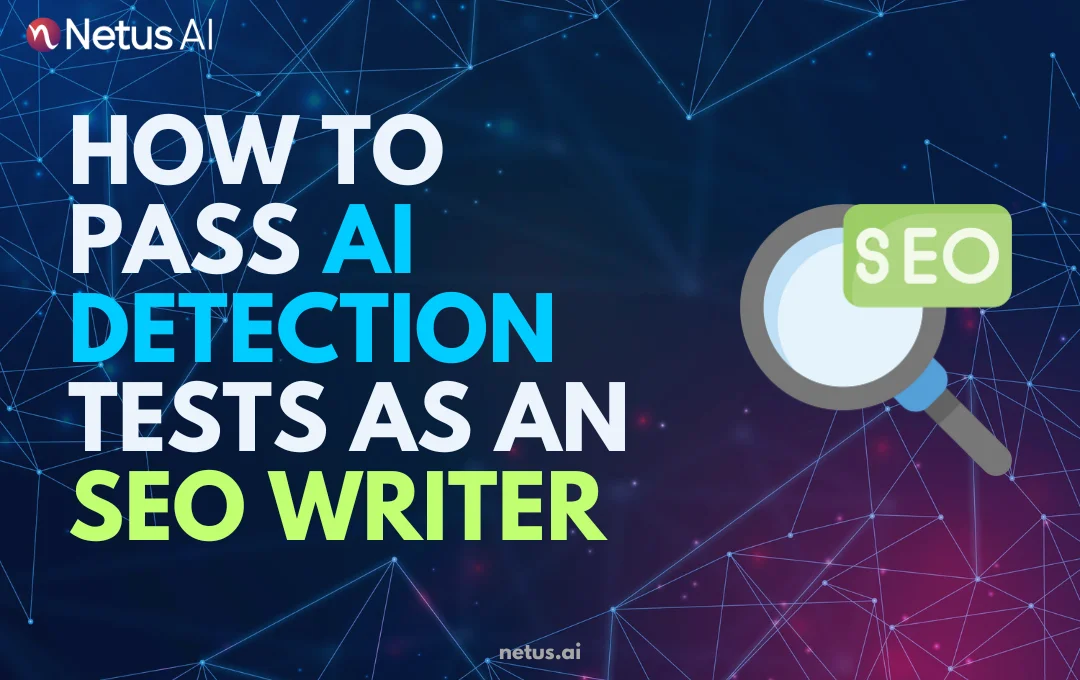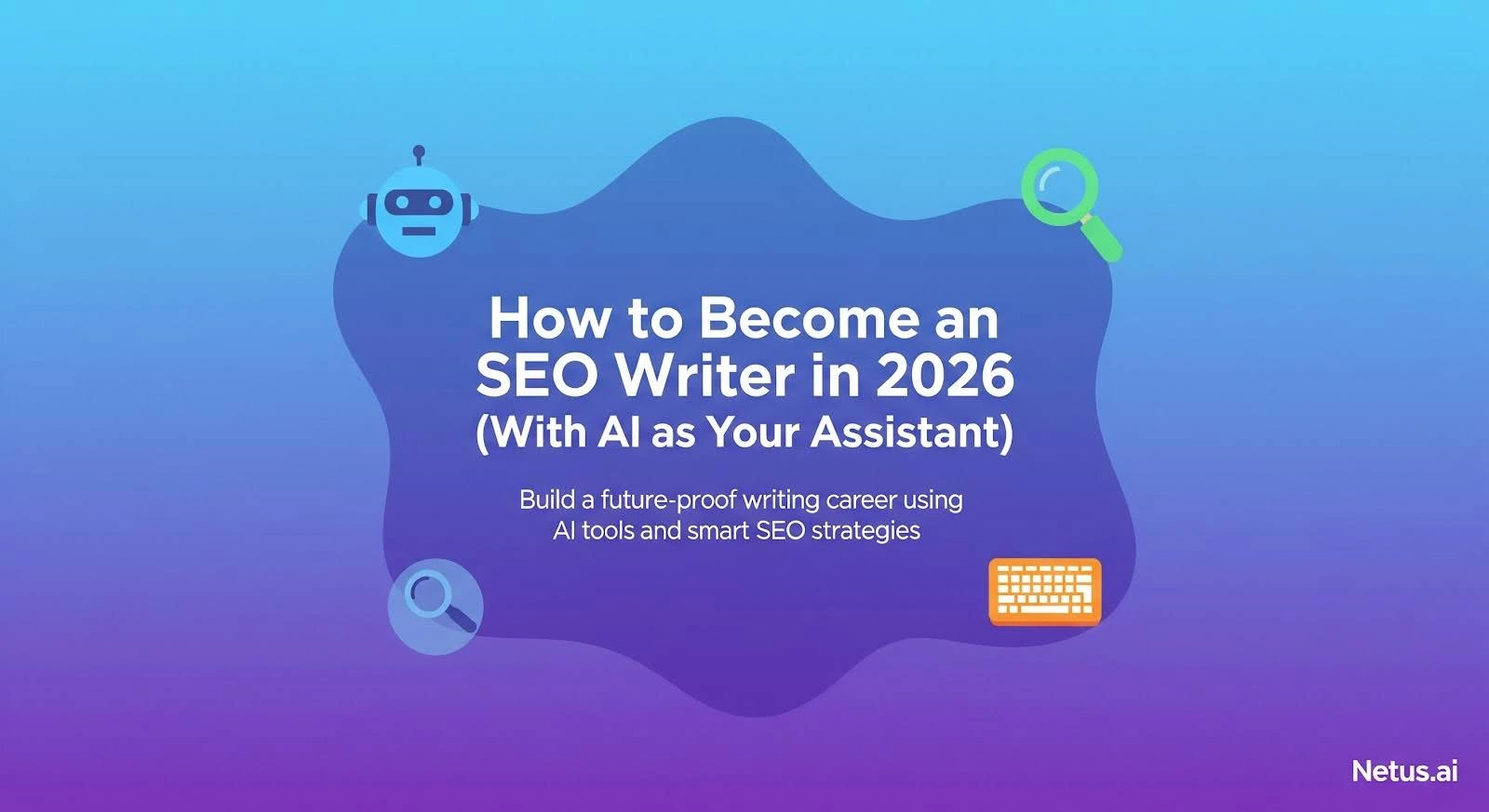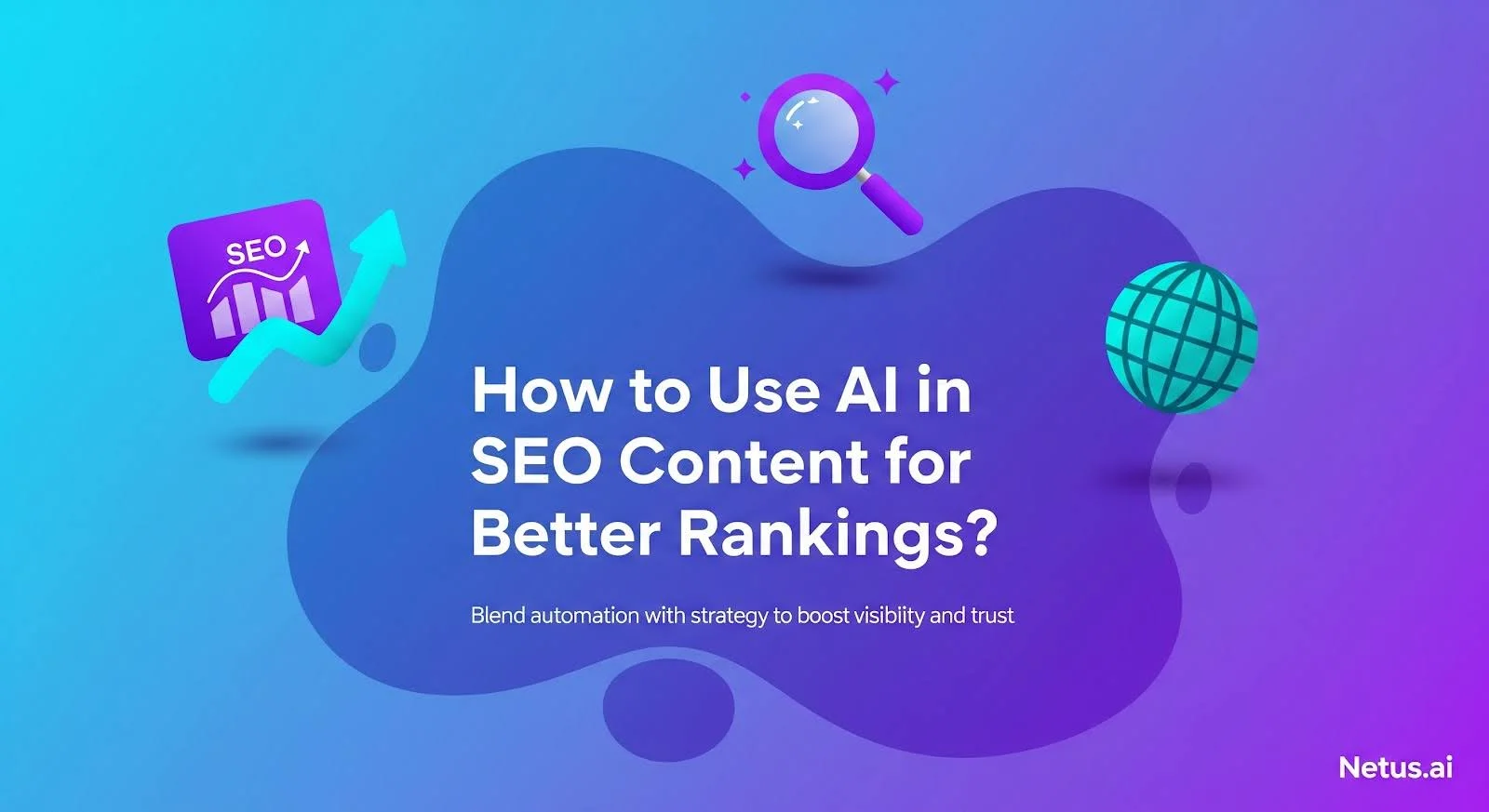SEO writing has rapidly changed. Once seen as secret weapons for scale, AI tools now cause anxiety as optimized, AI-crafted posts fail to rank.
The efficiency promised by AI clashes with the reality of detection. The new challenge is not just if AI can write for SEO, but if it can write invisibly, so humanely it avoids detection.
This critical shift to undetectable AI content is about survival and excellence in modern search.
Why is invisibility your new SEO superpower (it’s not just about dodging filters)?
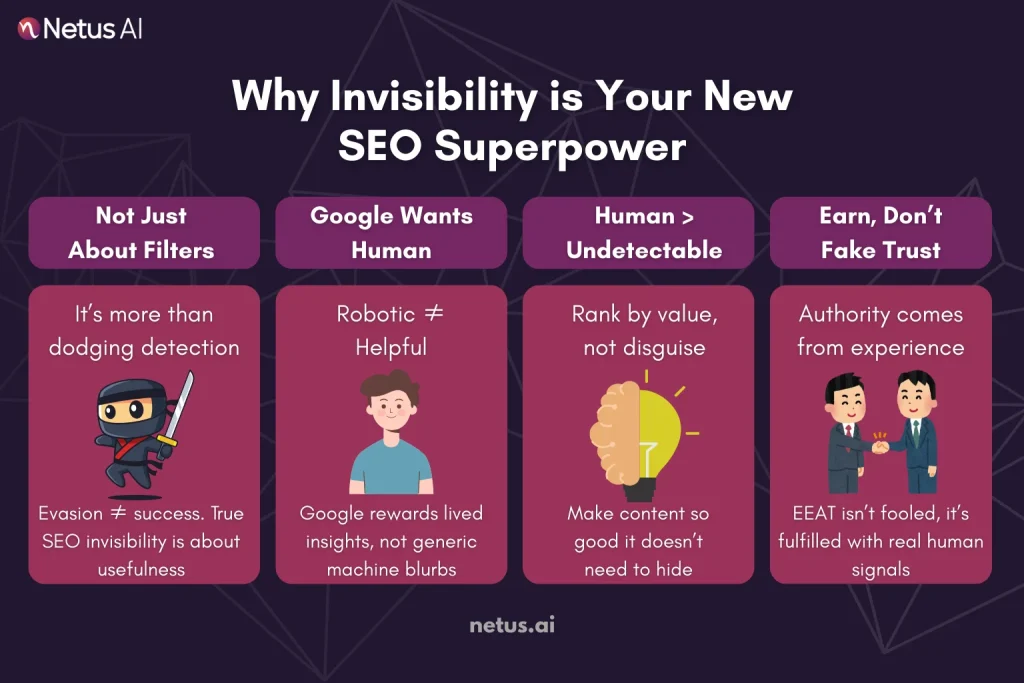
Google looks at AI content differently these days. They have gone past basic detection methods. Instead, the focus sits on their Helpful Content System. It also involves EEAT, standing for Experience, Expertise, Authoritativeness and Trustworthiness.
Google insists they do not punish helpful material made by AI. Still, plain and unedited AI writing tends to miss those key quality marks needed for search engine results pages.
Google prioritizes serving users the best answers. Robotic, shallow AI content fails this mission, leading to poor user signals (high bounce, low dwell, minimal shares) that harm rankings.
Content that “screams machine-made” lacks the necessary human nuance and unique perspective. Being flagged by AI detectors is a symptom; the core issue is failing the reader.
When it comes to making AI-generated content that slips past detectors, the real key is not about dodging those tools at all. Instead, put your effort into building stuff that is truly helpful, keeps people interested and comes across like something a real person put together.
That kind of approach lines up perfectly with what Google wants from content. In the end, it helps establish real trust with readers, boosts your authority in the field and supports rankings that last over time. Pretty much, this turns AI into a reliable machine for creating content that scales up and actually wins in the long run.
Cracking the code: What makes AI writing scream "robot!" (understanding detection)?
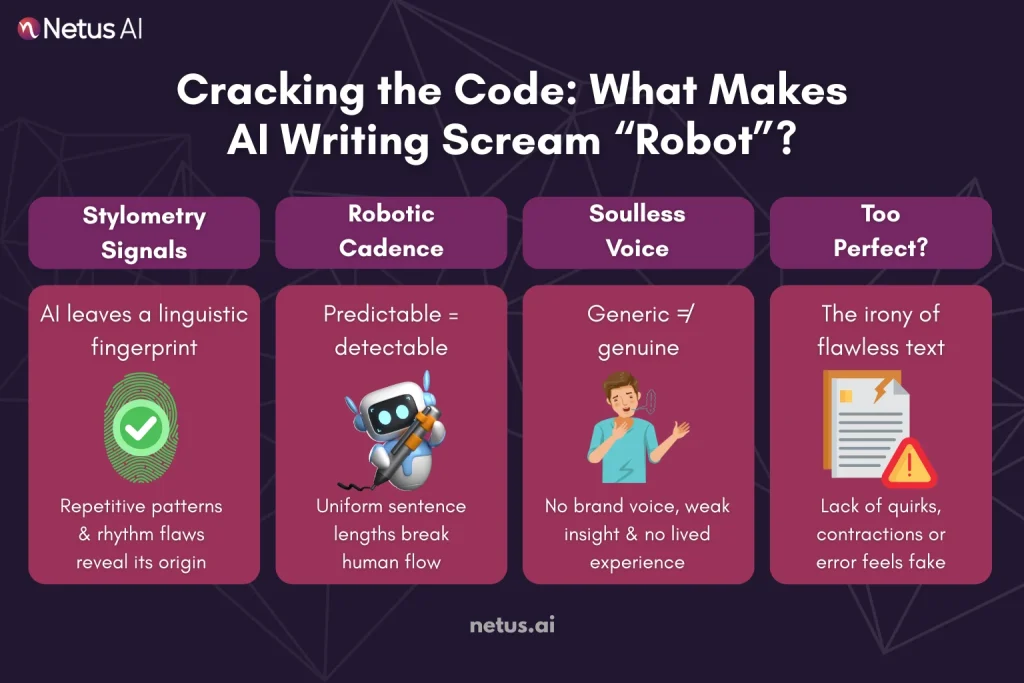
AI detectors spot machine-generated text using stylometry, a forensic analysis of writing style that identifies subtle, statistical patterns.
A major giveaway is unnatural uniformity, AI content often lacks the varied rhythm, sentence structure and organic flow characteristic of authentic human writing.
AI content often suffers from a generic voice and shallow depth. Trained on common data, it produces bland, statistically probable text lacking personality, unique opinions or cultural specifics.
While good at summarizing, AI struggles with new insights, deep analysis or connecting complex ideas, remaining surface-level. This lack of originality is a major red flag for detection and readers.
AI detection is triggered by several factors: repetition (lexical loops, rehashing points), uniformity, a generic tone, shallow factual depth and unnatural “perfection.”
This perfection includes flawless structure, slightly unusual vocabulary (like “utilize” instead of “use”) and a lack of the minor conversational quirks and errors common in human writing. Recognizing these signals is key to avoiding detection.
Beyond the obvious: Stealth tactics for truly human-sounding AI content
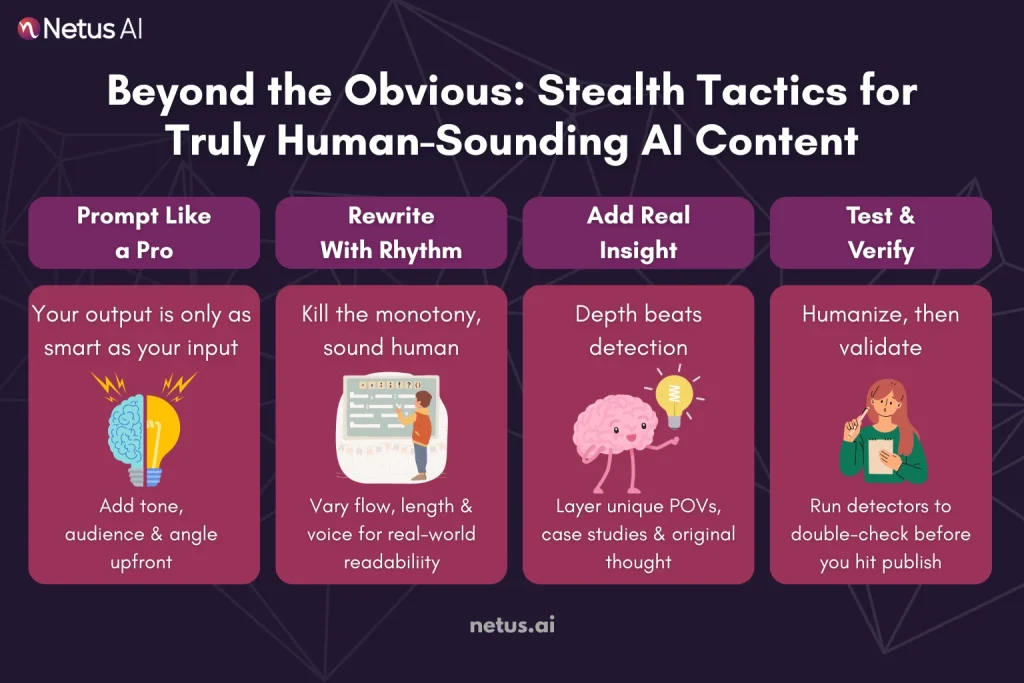
To avoid AI detection, use a humanized AI writing approach.
Start with strategic prompting: provide detailed context, including your brand voice, target audience and unique angle. Feed the AI rich input (outlines, counter-arguments, examples) to produce less generic output.
The real magic, however, happens in the editing crucible. This is where the raw material is transformed. Treat AI output as a sophisticated first draft, not a finished product. Your mission is to bypass AI detection by injecting humanity:
- Shatter the sentence monotony: Actively rewrite AI-generated text. Combine short sentences; break up long ones into digestible chunks. Vary sentence openings (dependent clauses, strong verbs, questions, fragments). Read aloud: if it doesn’t sound natural, rewrite it.
- Infuse voice & personality: Inject your unique brand voice (witty, empathetic, etc.). Replace generic language, use contractions and add strategic humor, empathy or opinion. Share a brief, relevant anecdote or surprising analogy to personalize the writing.
- Deepen the insight: Go beyond the AI’s synthesis by adding original thought, deeper analysis, practical takeaways and unique experience/data. This demonstrates real expertise.
- Combat repetition & generic language: Edit aggressively. Replace repetitive words with synonyms and eliminate clichés or overly formal language (“utilize,” “commence,” “in order to”) for simpler, more direct phrasing. Match terminology to your audience; avoid unnecessary jargon unless targeting specialists.
- Embrace imperfect flow (strategically): Human writing often includes non-linear elements, like brief digressions, dashes for emphasis or sentence fragments. Incorporating this “organic flow” enhances authenticity. The aim is purposeful humanity and clarity, not incoherent chaos.
Before hitting publish, always run your humanized draft through reputable AI detection tools. Don’t rely solely on your own judgment. Aim for results that lean heavily towards “human-written” or are confidently inconclusive.
This is your final quality check. Crucially, never publish raw AI outputs. The editing and humanization process is the critical step that transforms potential liability into a powerful asset.
Content starts at generation: NetusAI’s SEO article writer and content generator
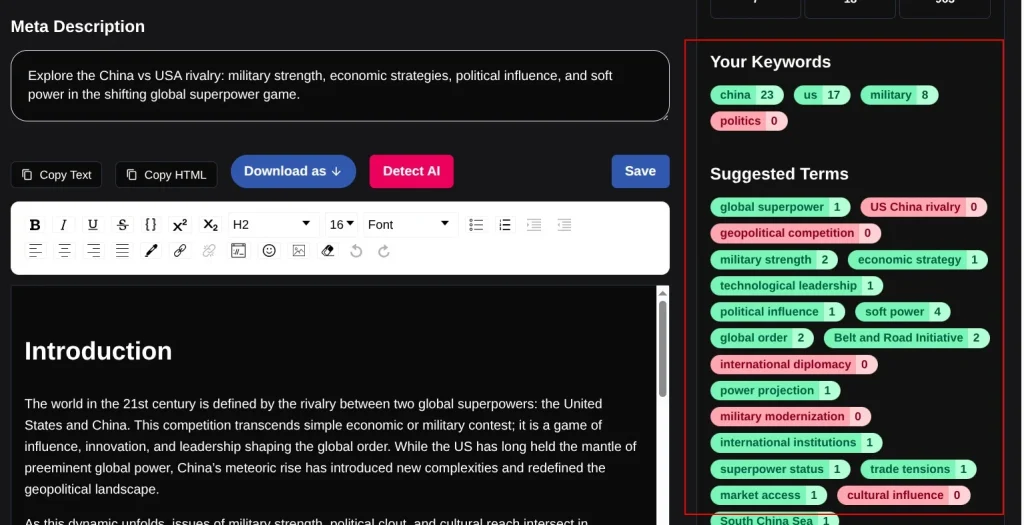
Avoiding stylometry and detection issues shouldn’t begin after content is written, it should start with the writing itself. That’s where NetusAI steps in.
Unlike generic AI tools that churn out robotic, easily flagged paragraphs, The NetusAI SEO Article Generator is designed to help you create full-length blog posts that are already optimized for clarity, tone and search intent. Unlike generic tools, it goes beyond simple drafting. It:
- Lets you input headlines and targeted SEO keywords
- Supports long-form templates for full blogs
- Auto-generates a structure with Title → Outline → Content
- Works in multiple languages for global teams
And most importantly, it ties directly into the Netus AI Bypasser + Detector system, meaning your output isn’t just readable, it’s already tuned to avoid detection.
You can generate, review and rewrite all in one interface without needing third-party tools to patch the gaps. It’s built for marketers, freelancers and bloggers who want their AI content to actually pass as human-written.
Content Generator
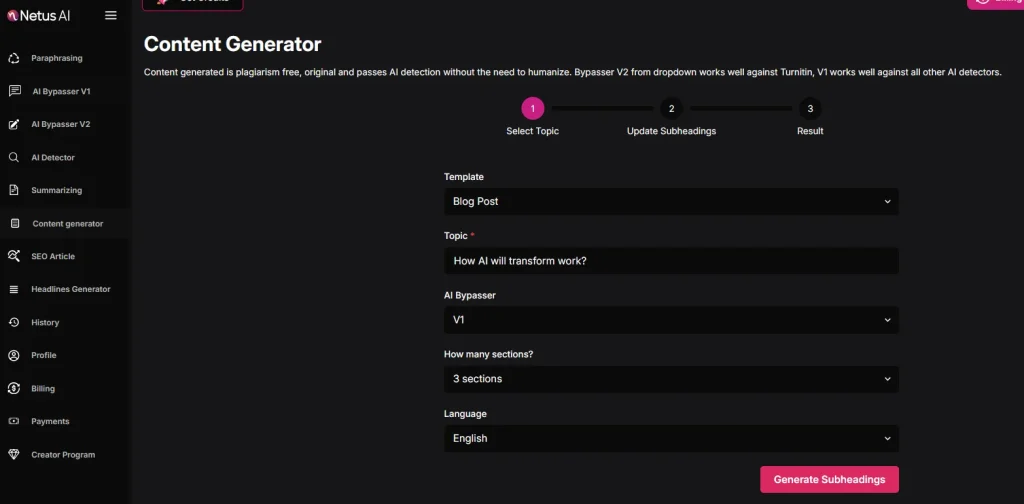
NetusAI also offers a Content Generator. Following the simple steps as shown on the user-friendly NetusAI page, Plagiarism Free Content will be generated from the beginning. The result generated can be downloaded and copied directly as well. Users can easily view their results as they will be stored in the history tab.
So whether you’re starting from scratch or turning an idea into a full SEO article, NetusAI saves you time and rewrites, without sacrificing trust or quality.
Final Thoughts
AI content isn’t the problem, detectable AI content is. If your blog posts feel robotic, predictable or templated, both readers and Google’s detection systems will catch on fast. That’s why mastering the art of humanized, undetectable AI writing is no longer optional for SEO, it’s survival.
That’s why the smart play is hybrid creation, with NetusAI, you can:
- Write with structure using the SEO article writer
- Plagiarism free Content generator
- Detect and fix red flags with the AI bypasser
FAQs
Undetectable AI content refers to AI-generated writing that doesn’t trigger red flags from AI detectors like GPTZero, ZeroGPT or OriginalityAI. It feels human, flows naturally and avoids patterns that stylometry tools use to identify machine-written text.
Yes, indirectly. Google doesn’t ban AI outright, but its systems reward “people-first” content. Detectors and stylometry-based evaluations can identify telltale AI signals and poor quality = lower rankings.
Tools like NetusAI, OriginalityAI and ZeroGPT allow users to test and rewrite AI content. NetusAI goes further by offering detection feedback + real-time rewriting to remove robotic phrasing while preserving meaning.
Not always. Simple paraphrasers often just shuffle words. To truly bypass detectors, you need tools that restructure tone, syntax and sentence flow, like NetusAI’s Paraphraser and AI Bypasser.
Bypassing focuses on avoiding detection, while humanizing adds value: tone variation, originality and narrative depth. The best SEO strategy blends both, clean enough to pass detectors, engaging enough for readers.
Yes, as long as the intent is clarity and reader experience. Editing AI output to improve its readability, tone and structure is part of responsible publishing, not cheating.


